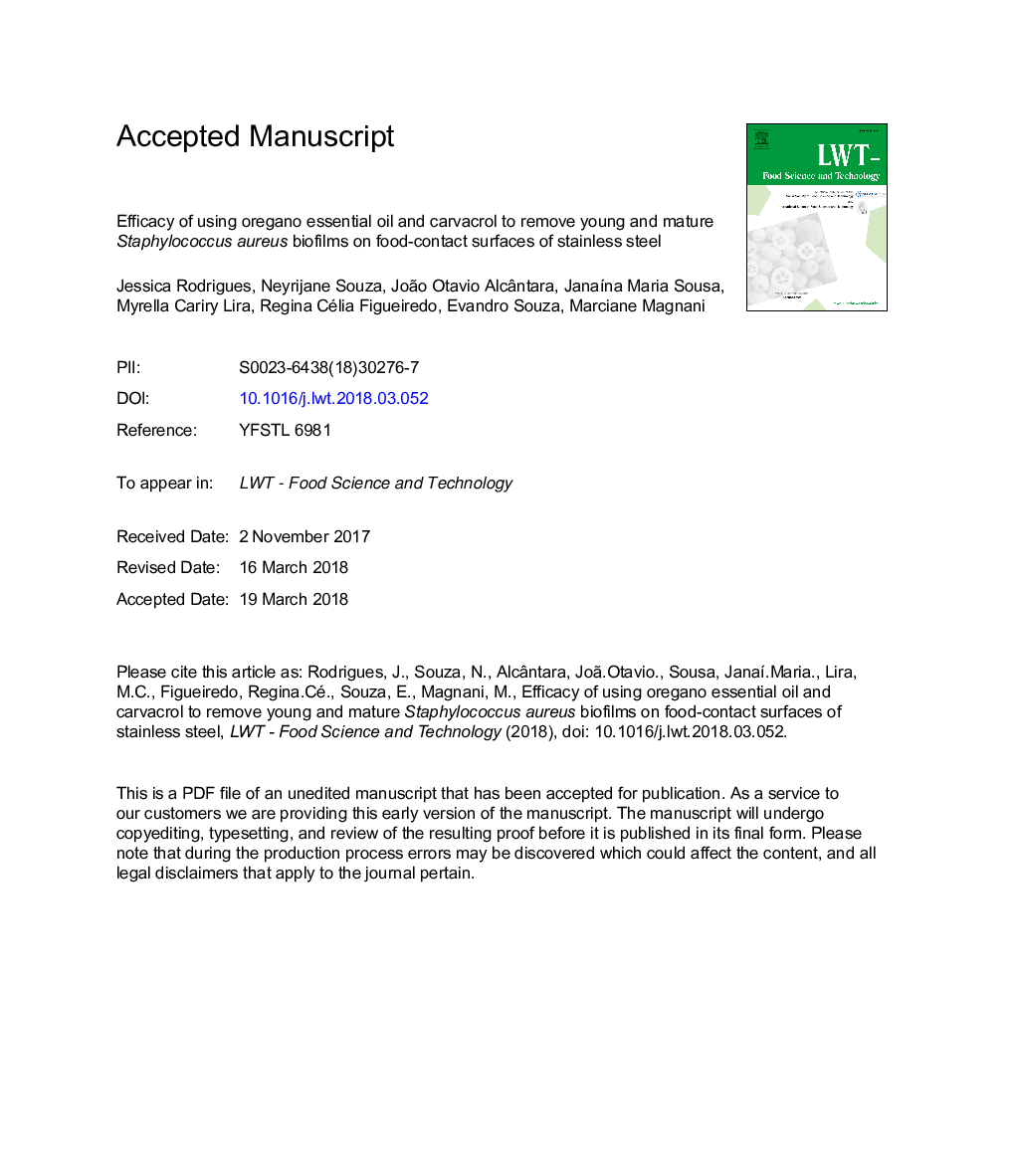| Article ID | Journal | Published Year | Pages | File Type |
|---|---|---|---|---|
| 8891002 | LWT - Food Science and Technology | 2018 | 26 Pages |
Abstract
This study assessed the efficacy of using the essential oil from Origanum vulgare L. (oregano; OVEO) and carvacrol (CAR) to remove biofilms formed on stainless steel surfaces. The sessile cells counts (SSC) in young and mature biofilms formed by Staphylococcus aureus on AISI304 surfaces were assessed after 10- and 15-min exposure to OVEO and CAR. Scanning electron microscopy analysis were performed to assess the ultrastructure of sessile cells. The decrease in the initial SCC varied with the test strain, assayed OVEO or CAR concentration and exposure time, however no differences were observed between young and mature biofilms. A 10-min exposure to 10â¯Î¼L/mL OVEO or 5â¯Î¼L/mL CAR caused a decrease â¥2 log CFU/cm2 in the SCC of young and mature biofilms formed by both S. aureus strains tested. No SCC (<1 log CFU/cm2) in young or mature S. aureus LPMA63 biofilms were detected after a 15-min exposure to 10â¯Î¼L/mL OVEO or 5â¯Î¼L/mL CAR. Sessile cells exposed to OVEO or CAR presented irregular morphology with bubbles or spots on their surface. Holes on cell membranes were observed in sessile cells exposed to CAR. OVEO and CAR were effective to remove young and mature biofilms on stainless steel surfaces.
Related Topics
Life Sciences
Agricultural and Biological Sciences
Food Science
Authors
Jessica Bezerra dos Santos Rodrigues, Neyrijane Targino de Souza, João Otavio Alcântara Scarano, JanaÃna Maria de Sousa, Myrella Cariry Lira, Regina Célia Bressan Queiroz de Figueiredo, Evandro Leite de Souza, Marciane Magnani,
